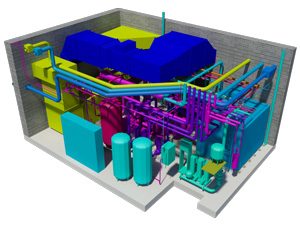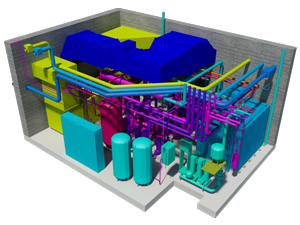BIM Compliance offers the best Infrastructure for Developments
The UK Government has thrown its backing whole-heartedly behind BIM (Building Information Modelling), which means that by 2016, all centrally procured government construction projects must be delivered using the BIM process. The BIM process covers the whole supply chain, from smallest supplier to largest contractor, and so every organisation involved in developments must get up to speed with BIM and the benefits of using it, in order to not risk missing out on valuable opportunities.
A building information model needs to contain both the actual building design, and any data which is concerned with the properties of the buildings components, the buildings construction and any ongoing maintenance of the building. This means that there will be a database built within each project and this is one of the most important parts of the project, as well as the way that all of the information contained within in is shared. For this reason, BIM compliance isn’t just about a technological change in the way things are done, but also an overhaul of the existing design process. If you think about the changes that were undertaken when people moved from paper drawings to drawings on the computer about 20 years ago, that just automated the process – the move towards BIM compliance is an even bigger change as it will basically transform the way that project teams work together. 
The key to achieving BIM compliance is creating simple yet effective cooperation between the design, construction and operation teams in all stages of the operations cycle. This free flow of information should lead to a reduction in duplication, the minimising of errors, a streamlining of processes, and should facilitate easy collaboration. There may be some confusion in the industry at the moment, which has led to a belief that BIM Compliance is a design-led initiative that means that construction companies must adopt the same 3D tools as the design team in order to have a single source of data. This isn’t the case. Fortunately, the focus of BIM is on the free sharing of information across all divisions for the lifecycle of the project. For this reason, it will provide both contractors and owner operators with access to the key design data about the infrastructure of the development, which they can then use to improve the effectiveness of the construction and operation process.
BIM can be seen as an asset model, which when used will allow the integration and sharing of information from all sources, authors and systems involved in the project in a secure and managed manner. This can then be used in a consistent way throughout the project to improve efficiency and drive collaboration between all units. BIM is also concerned with information management, as it enables each contractor to feed information into the project planning tools and, for this reason, resolve any potential conflicts before they occur on site. BIM compliance also lets the facilities management team have access to space information before the building is completed, which will allow them to have more effective upfront planning. The main benefit of BIM, therefore, can be seen to be the sharing of crucial design, engineering and construction information that can thereafter be used to help development managers to make cost-effective decisions and renovations work.
For more information call The CAD Room today on 0161 427 0348 or email grant.hood@thecadroom.com or visit our website https://www.thecadroom.com/

